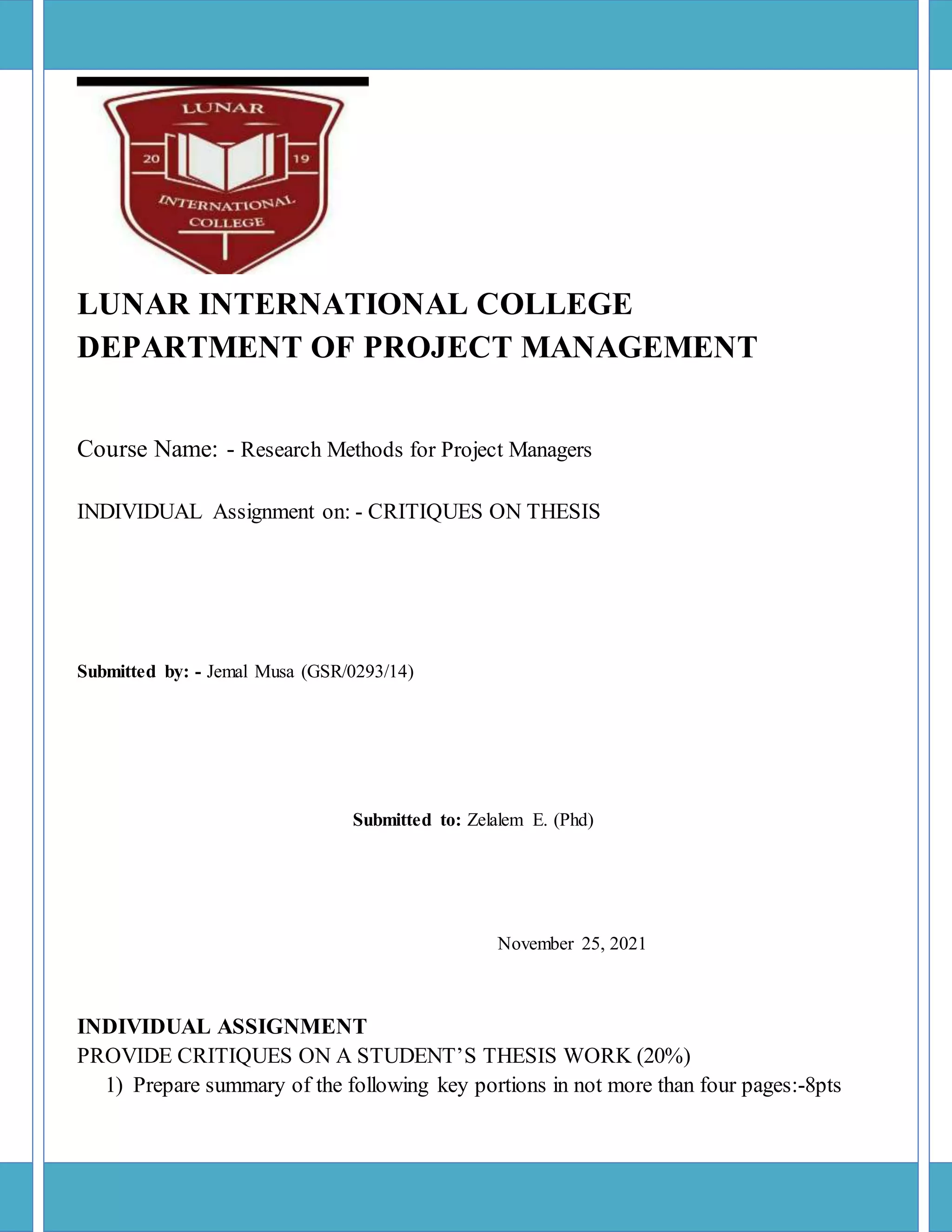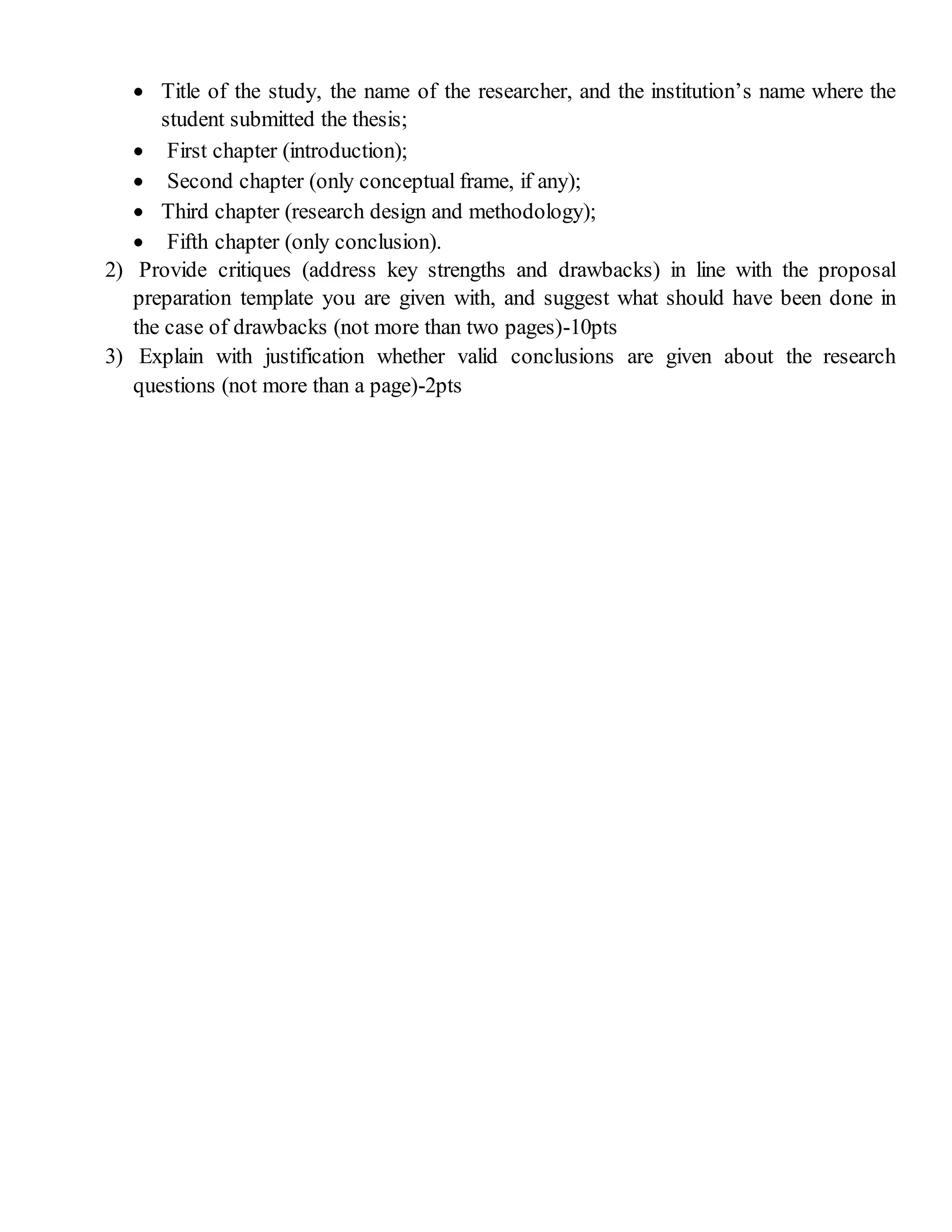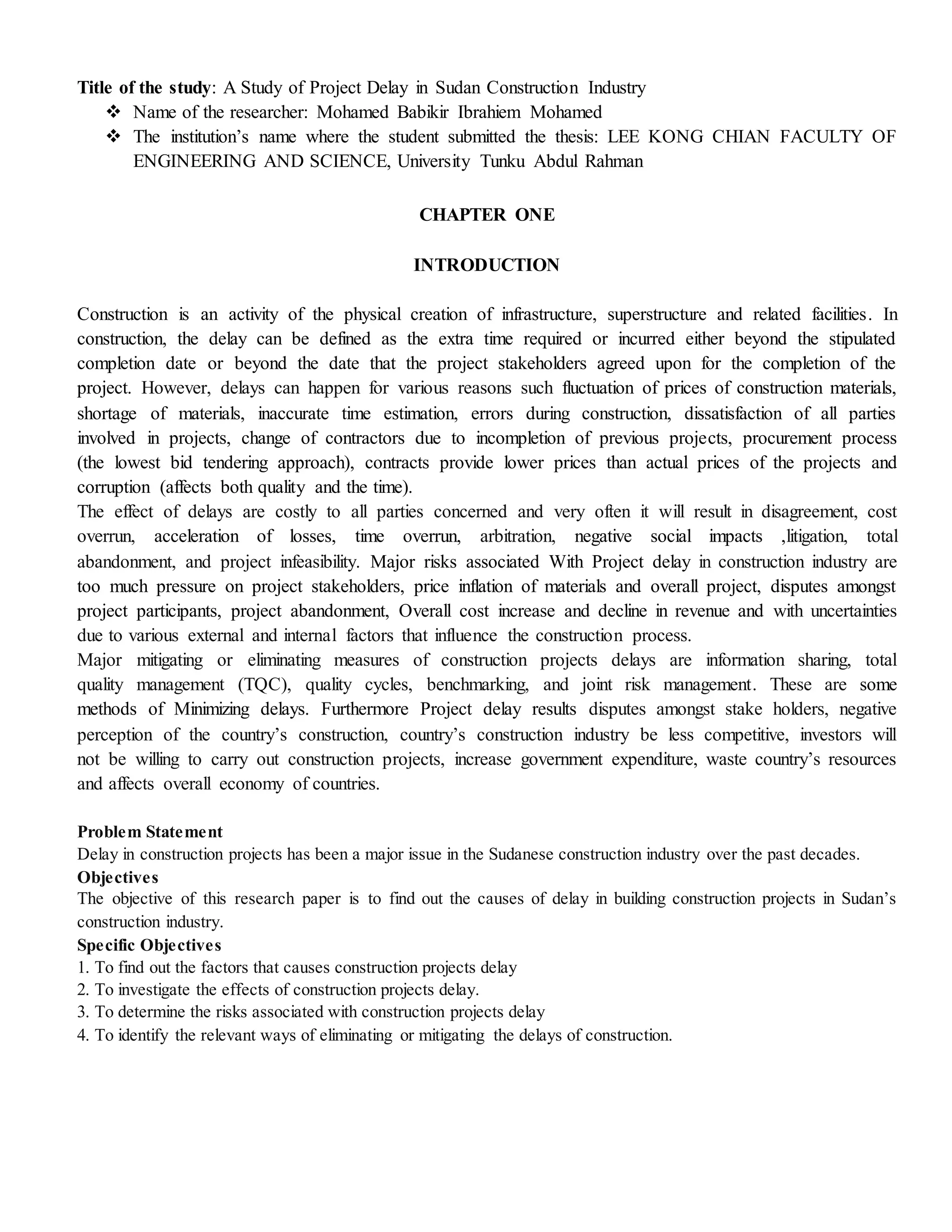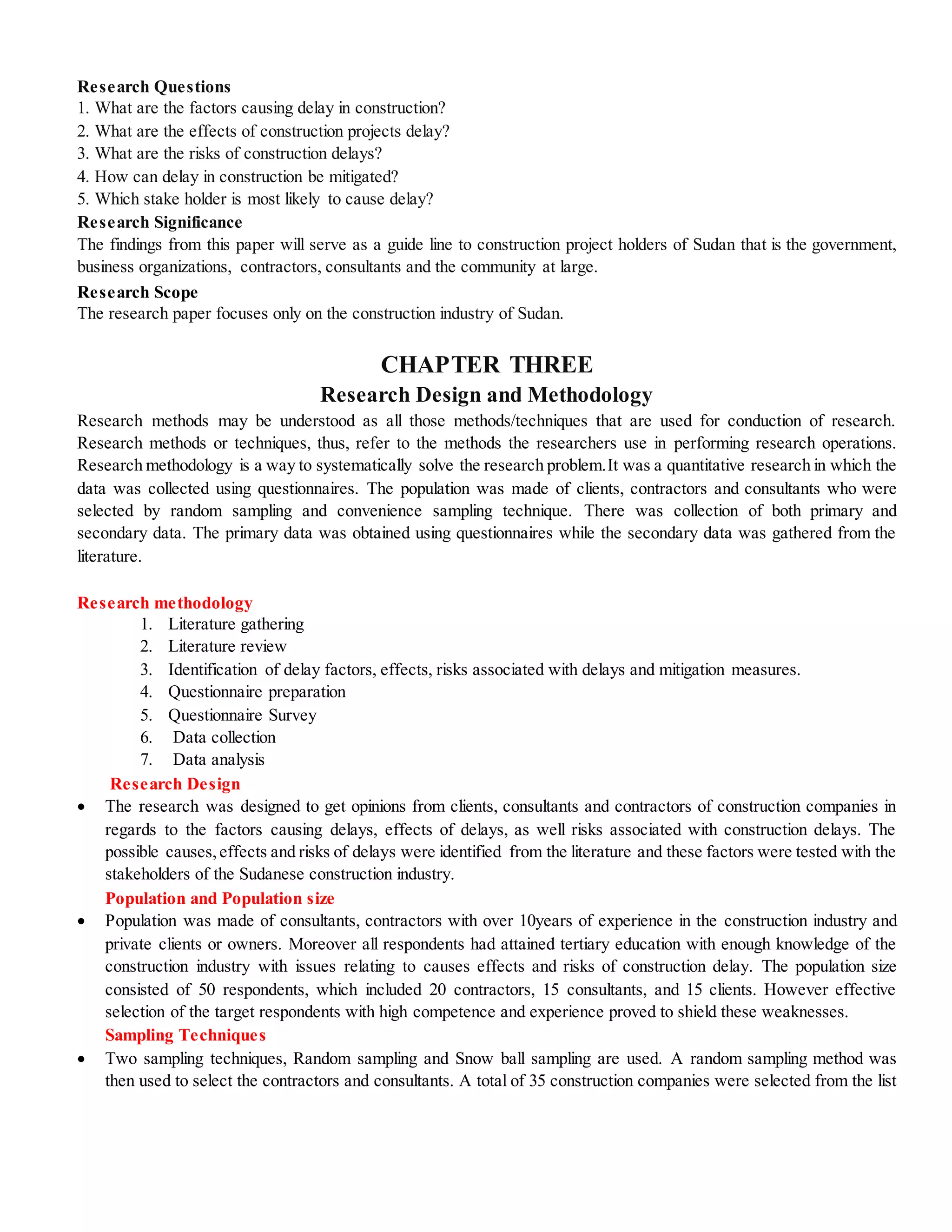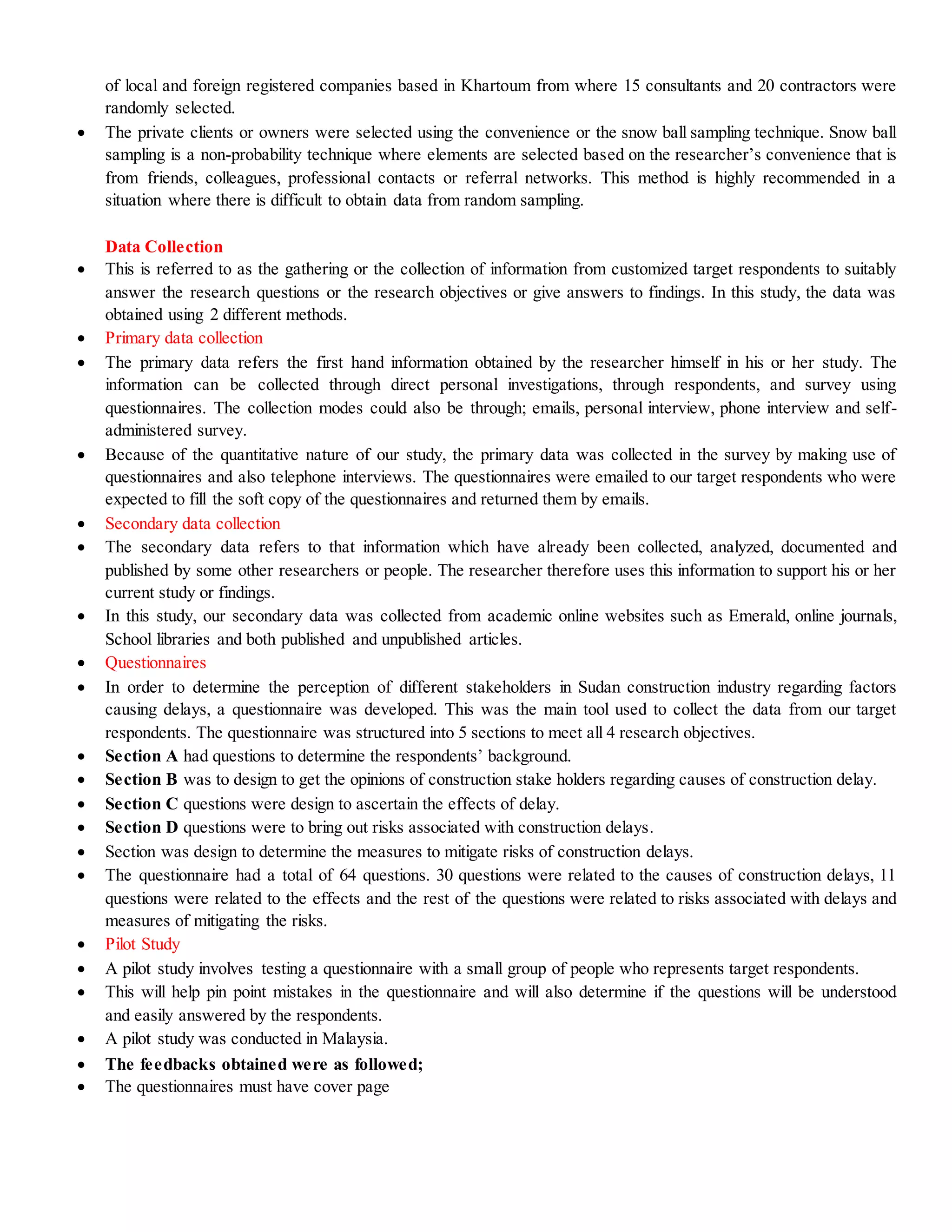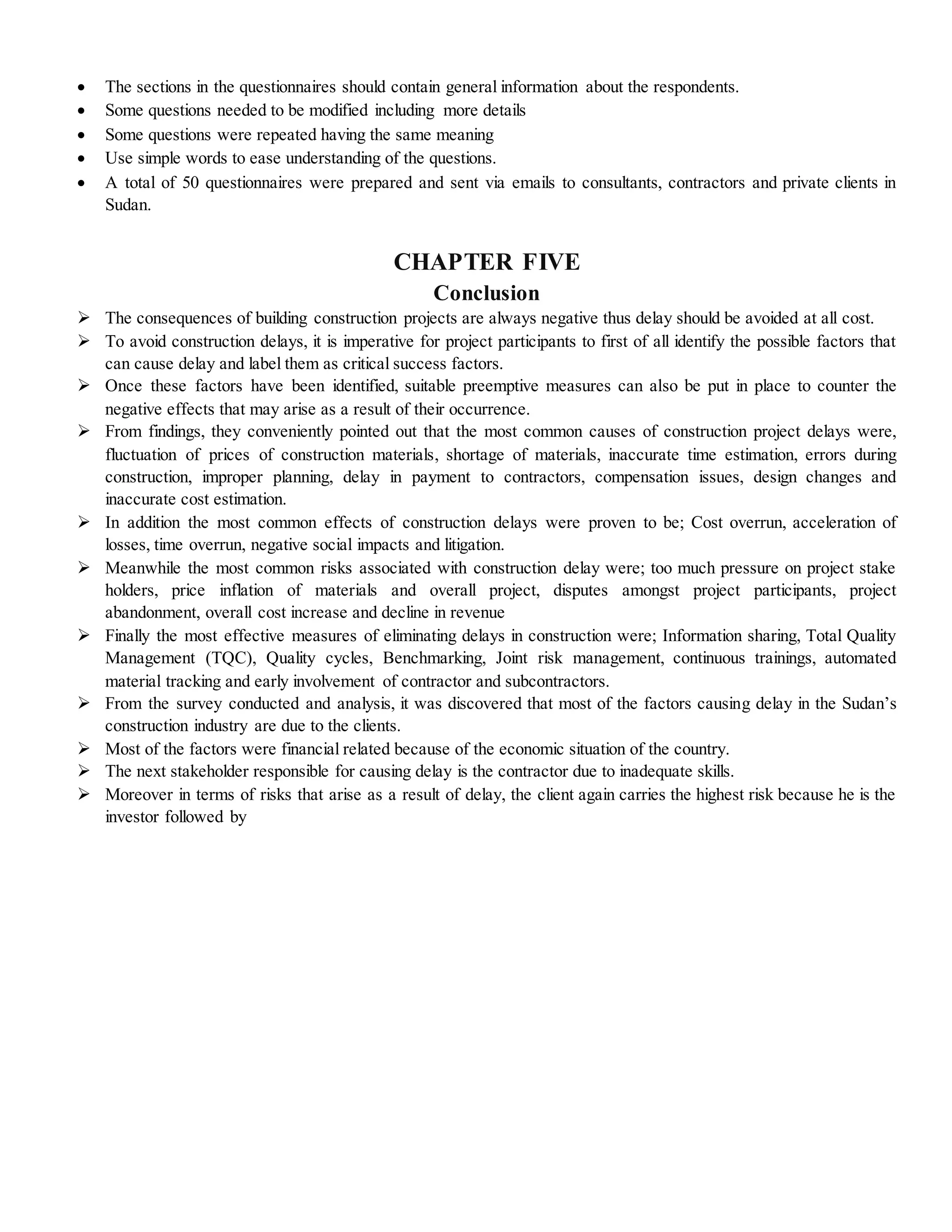The thesis examines causes, effects, and risks of construction project delays in Sudan and identifies mitigation
measures. It uses a quantitative survey design to collect primary data through questionnaires distributed to contractors,
consultants, and clients in Sudan. The research finds that the most common causes of delay are related to materials and
finances, with clients posing the highest risk. It also determines that implementing measures like information sharing,
quality management, and training can help reduce delays. However, the study has limitations like a small sample size
that restrict generalizability. Overall, the thesis provides useful insights into addressing delays in Sudan's construction
industry.
